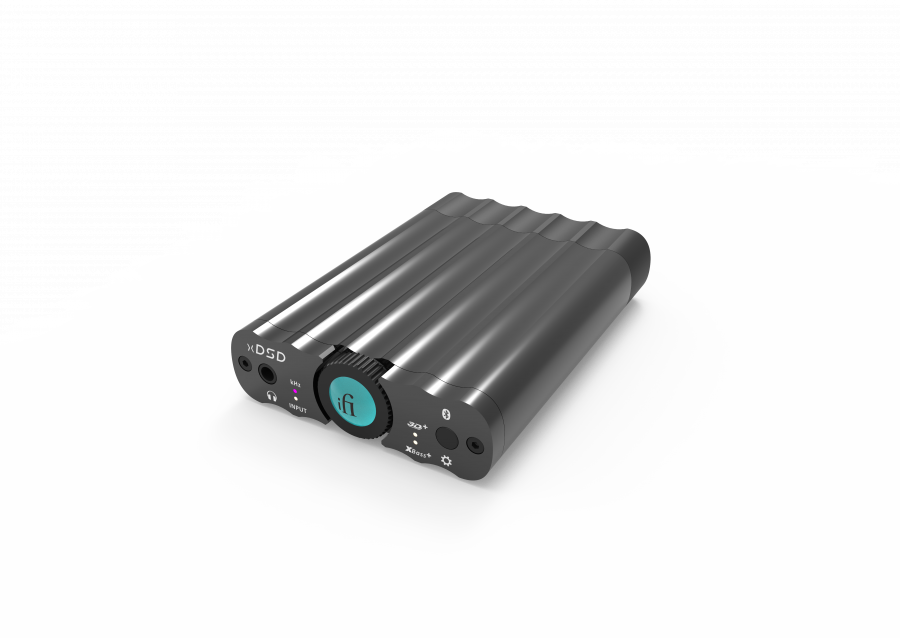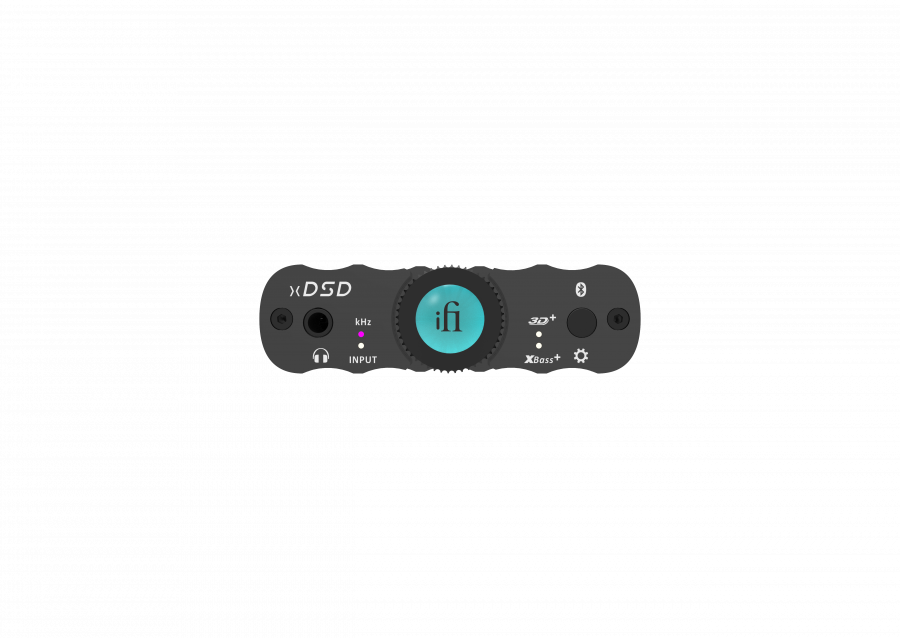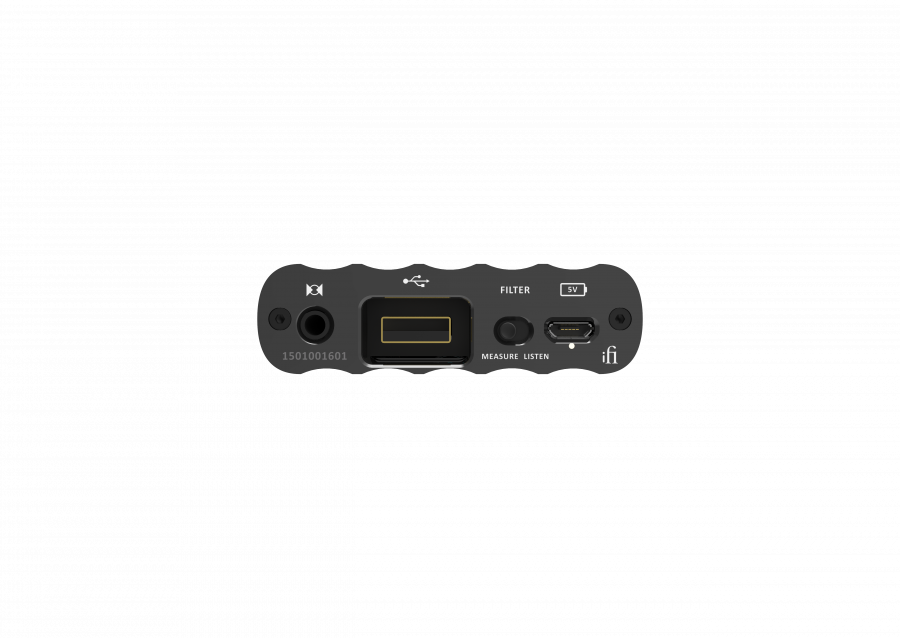So the volume control itself is analog but it is controlled digitally, so in theory itcshould be possible to control it over usb.The
If I'm recalling correctly, the knob is endless and only delivers pulses to a stepped analogue volume control.
You are using an out of date browser. It may not display this or other websites correctly.
You should upgrade or use an alternative browser.
You should upgrade or use an alternative browser.
iFi audio xDSD- The Official Thread
- Thread starter iFi audio
- Start date
raysclim1568
100+ Head-Fier
- Joined
- Nov 16, 2011
- Posts
- 117
- Likes
- 13
Hello all , I am using mostly 2.5 balanced cable headphone for my listening . does it means that what I really need is a 2.5 balance to 3.5 balance adapter to be able to use with xdsd 3.5 balance PO ? and is it the same termination as Hifiman 901 player as they have the 3.5 balance PO as well ?You mean the 3.5mm on this device is balanced ?
Thanks for enlightening me on this .
Best .... Raymond
In theory but I don't recall any mention of such a feature.So the volume control itself is analog but it is controlled digitally, so in theory itcshould be possible to control it over usb.
http://mediaportal.ifi-audio.com/Digital/NanoBL/nDSD BL balanced circuit Tech Note (Nov xx) .pdfHello all , I am using mostly 2.5 balanced cable headphone for my listening . does it means that what I really need is a 2.5 balance to 3.5 balance adapter to be able to use with xdsd 3.5 balance PO ? and is it the same termination as Hifiman 901 player as they have the 3.5 balance PO as well ?
Thanks for enlightening me on this .
Best .... Raymond
Koolpep
Headphoneus Supremus
Yes.You mean the 3.5mm on this device is balanced ?
The nice thing about the 3.5mm balanced output is that you can plug in a regular non-balanced 3.5mm plug without wrecking anything. I wish they'd used a Pentaconn 4.4mm socket instead (we need to get all enthusiast manufacturers to switch to a single standard) but at least it is flexible.
ngoshawk
Headphoneus Supremus
- Joined
- Dec 13, 2015
- Posts
- 2,437
- Likes
- 2,889
The NeXt Generation of Portable Audio
iFi Audio xDSD - The Official Launch
Introduction
When iFi audio launched its original micro iDSD headphone amp, preamp, and DAC back in 2014, it raised the bar for small, portable, high-performing DACs. It’s been lifting it higher ever since. Last November saw the introduction of the nano iDSD Black Label, with a host of new features including support for MQA (Master Quality Authenticated) audio. Now, iFi has excelled itself again with the launch of xDSD – the first in the company’s next generation of portable DACs.
A sonic step up
With a pure analogue volume control retaining full-resolution at all volume levels, the xDSD is a major sonic step up for all smartphones, digital audio players and computers. Its selectable 3D+ and XBass+ functions bring both sensitivity and power to the careful listener. The artist appears in the room with music and lyrics flowing all around.
The xDSD has pulled off the task of being ultra-portable and wireless while supporting high-resolution formats, including MQA, and delivering 500mW of power per channel. By means of aptX HD and AAC, it brings hi-res streaming to Bluetooth.
Feature laden
In terms of attributes, the xDSD is similar to the micro iDSD, though it’s more advanced:
Small is beautiful
- Burr-Brown Hi-Res True Native DSD DAC chipset for discerning listeners
- Dual-mono headphone amplifier with 500mW of power per channel, which can unleash the full potential of both 32ohm and 600ohm headphones
- High-resolution audio up to PCM768kHz and DSD512
- MQA ready for playing back all high-res MQA encoded files
- Wireless Bluetooth (aptX and AAC) for CD-quality wireless sound
- S-Balanced compatible 3.5mm headphone output brings the benefits of the balanced connection to single-ended headphones
- Advanced Analogue Signal Process (ASP), 3D+® and XBass+® headphone optimisation circuits
- Pure analogue volume control retaining full-resolution at all volume levels
- Audiophile Digital Filter 'Measure/Listen' selectable
- Large 2200mAh Lithium-Polymer battery providing six-to-eight hours of playing time
All these features have been packed into a rugged magnesium-aluminium body measuring just 95x66.5x19mm and weighing 127g. Though it has some similarities with the micro iDSD, it’s control layout is very different because of its Bluetooth wireless capability.
Take a look at the front panel controls (left to right) below:
- 3.5mm HP Jack (TRRS balanced compatible, no microphone support, switchable to line out).
- Right of the jack, two separate RGB LEDs indicate sample rate and input selection.
- Volume (Rotary with ‘push’ button) with translucent centre and volume indication backlight.
- Right of the 3D+/XBass+ button are two separate white LEDs to indicate 3D+ and XBass+.
- The 3D+/XBass+ button push button cycles between all off, 3D+, XBass+ and both.
Rear panel controls (left to right)
Time flies by when the listener is immersed in the music played by the xDSD. Guitars sound real and a Steinway piano sounds ‘woody’ instead of ‘glassy’ like an electronic keyboard. Musicality overflows.
- 3.5mm SPDIF (Coax/Optical combo, 192kHz supported).
- USB A-type OTG Input mounted centrally.
- Filter switch that slides between ‘measure’ and ‘listen’.
- Micro USB connection for charging (power input only, full charger detection for fast charge).
- Below the micro USB port, an RGB LED indicates battery status.
The retail price of the xDSD is US$399 (ex-tax) or €449/£399 (incl VAT).
Very nice! I am looking forward to auditioning this soon. Keep up the great work, @iFi audio ! 2000th post, too...a good sign!
golov17
Headphoneus Supremus
dannyvstheworld
100+ Head-Fier
- Joined
- Mar 26, 2017
- Posts
- 270
- Likes
- 243
Thanks for the impressions. I'm deciding between this and micro iDSD BL. Since I usually listen at very low volume, may I ask have you tried them at low volume, and if so, could you share some impressions/ differences? Things like channel balance, precise control of volume, and does the sound quality deteriorate at low volume? (reduced dynamic range, veiled, etc.)Ok, have spent a couple of hours listening to the xDSD and comparing it to the Micro BL. I'll have the Nano BL in around 2 days, so I'll post some impressions regarding that comparison shortly after that.
For now, compared to the Micro BL, the xDSD is a wonderful device. Using an A/B switch to jump between the 2 the Micro has a fuller and more detailed sound. There are just some micro details which come across as sounding more apparent on the Micro. The xDSD's sound just seems a bit more "pushed back". That's not to say that it seems veiled, not even close...but perhaps just a bit "softer" in texture (if that makes sense). The Micro's sound stage seems to "wrap around" a bit wider, but perhaps due to that fuller sound also feels just a touch more intimate, whereas the soundstage of the xDSD seems somewhat deeper but not as "holographic" (I don't like that word, but I can't think of anything else right now, lol).
Both the Xbass+ and the 3D+ on the xDSD are substantially more subtle, but I personally prefer the 3D+ on the xDSD, as the 3D+ on the Micro just elevates the higher frequencies too much and so I pretty much avoid using it at all cost on the Micro. The xBass+ on the Micro is the more "fun" kind, digging in deep and hitting hard, whereas the same function on the xDSD, as I said, is more subtle, but as a result possibly more usable for a wider variety of music (if you like a bass boost, that is).
I also noticed xDSD has this feature called S-Balanced, which is claimed to reduce distortion and noise. Wonder if this is something that micro iDSD BL doesn't have, and whether it'll make a difference.
Micro iDSD BL does not have S-Balanced, but nano iDSD BL has. But the biggest difference between micro iDSD BL and xDSD is the amplifier power. xDSD is about twice as powerful as nano iDSD BL but no where near the micro iDSD BL power, especially in Turbo mode. That being said, xDSD drives Grado GH2 and Ultrasone Edition 15 perfectly fine. With Audio Technica ADX5000 (420 ohms), sometimes the volume needs to go more than 90% mark (red color). And I feel that the ADX5000 is not driven at its full potential (just my subjective impression). YMMVI also noticed xDSD has this feature called S-Balanced, which is claimed to reduce distortion and noise. Wonder if this is something that micro iDSD BL doesn't have, and whether it'll make a difference.
Devodonaldson
Headphoneus Supremus
Well it seems like you have a pretty good grasp on the xDAD. Any detailed sound impressions you wish to share? Also, is the xDAD a full MQA decoder, or is it simply a renderer like the nano BL?Micro iDSD BL does not have S-Balanced, but nano iDSD BL has. But the biggest difference between micro iDSD BL and xDSD is the amplifier power. xDSD is about twice as powerful as nano iDSD BL but no where near the micro iDSD BL power, especially in Turbo mode. That being said, xDSD drives Grado GH2 and Ultrasone Edition 15 perfectly fine. With Audio Technica ADX5000 (420 ohms), sometimes the volume needs to go more than 90% mark (red color). And I feel that the ADX5000 is not driven at its full potential (just my subjective impression). YMMV
It's my 4th day after getting xDSD. I'm still in the process of "burning in" the amplifier analogue circuits. So I cannot provide fully detailed impression. But so far my impression is impressively positive. In my earlier post, I mentioned that Hugo 2 is technically better in every single aspect. However, the difference is not big at all. Considering the price and size, it is really impressive. Comparing against Mojo (not A/B comparison, it's from my memory), xDSD sounds better to my ears. Only limitation I found so far is the amplifier power, which is not powerful enough to drive high impedance or low efficiency cans. Well, designed as a small portable DAC/amp it is quite understandable. Driving cans like Grado GH2, Ultrasone Edition 15, and Klipsch HP3 is a breeze. Music is beautifully rendered and presented with these cans plus IEMs like Tia Fourte and U18t.Well it seems like you have a pretty good grasp on the xDAD. Any detailed sound impressions you wish to share? Also, is the xDAD a full MQA decoder, or is it simply a renderer like the nano BL?
In my understanding, decoding MQA is usually done by player software like Audirvana and Roon and the MQA enabled DACs like xDSD and nano iDSD BL renders. So I don't fully understand your question. But maybe this is my misunderstanding.
Devodonaldson
Headphoneus Supremus
Regarding MQA the LG V30 has a built in MQA decoder, meaning that Listening to Tidal hi-res via an app like USB Audio Player Pro, one is able to listen to the MQA tracks in all their glory, whereas a device the the nano BL and a Dragonfly red will be limited to the 24-bit 48khz file, as they are not able to do initial unfolds. The meridian exploere 2 is also a full MQA decoder, but that certainly isn't a sole reason to choose one DAC over another that is superior in every other way. I thoroughly enjoy the sound of the moji (before I sat down with the Hugo 2) but was missing out on the ability to add a level of bass boost when desired. Ilike to add a little extra thump when I switch from a genre such as classical or jazz to hip hop. As far as power, my phone's off choice are iSine 20, V-moda Crossfade 2, and Audioquest Nightowl, so being that the Crossfade is my highest impedence set at 32ohms, I know the xDAD will provide more than sufficient power to drive them properly. I have been holding out for the Monoprice monolith portable amp and dqc since trying it out at Canjam. AK4493 -6 TO +6 db adjustment on both the bass and treble, as well as a 3 point parametric eq. As well as a "3d sound" comparable setting. I was pleasantly surprised by it at a price of $279 looking to release around June 1. I was also really interested in the xDSD. Your initial impressions make it sound like a winner, and I'm looking for a no bigger than phone sized device as an upgradeto attach to my Xperia Z3 turned DAP with usb DACIt's my 4th day after getting xDSD. I'm still in the process of "burning in" the amplifier analogue circuits. So I cannot provide fully detailed impression. But so far my impression is impressively positive. In my earlier post, I mentioned that Hugo 2 is technically better in every single aspect. However, the difference is not big at all. Considering the price and size, it is really impressive. Comparing against Mojo (not A/B comparison, it's from my memory), xDSD sounds better to my ears. Only limitation I found so far is the amplifier power, which is not powerful enough to drive high impedance or low efficiency cans. Well, designed as a small portable DAC/amp it is quite understandable. Driving cans like Grado GH2, Ultrasone Edition 15, and Klipsch HP3 is a breeze. Music is beautifully rendered and presented with these cans plus IEMs like Tia Fourte and U18t.
In my understanding, decoding MQA is usually done by player software like Audirvana and Roon and the MQA enabled DACs like xDSD and nano iDSD BL renders. So I don't fully understand your question. But maybe this is my misunderstanding.

alphanumerix1
1000+ Head-Fier
The shape is odd for a portable solution. Looks like it would stack horribly.
I bought the Hiby R3 to pair with this we'll see how they stack .I'm sure I won't care as the sound should be frickin awesome. In the mean time enjoying the Nano and Micro BL right now.
Users who are viewing this thread
Total: 3 (members: 0, guests: 3)































